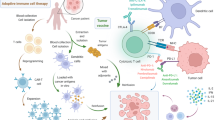Abstract
Objective
This study was aimed to research the feasibility of ATP-bioluminescence assay (ATP-TCA) guiding the treatment on recurrent non-small cell lung cancer (NSCLC) combined with malignant pleural effusion.
Methods
We collected 30 pleural fluid samples which were approved to be positive by cytology from recurrent NSCLC patients. These cells were cocultured with chemotherapy medicines, single agent or drugs combination. Five drug concentrations, two parallel holes were examined in vitro for 4 days, the results were measured by adding luciferase-fluorescein working system and luminescence analyzer. We applied chemotherapy medicines according to the results in vitro of ATP-TCA.
Results
There were differences among drug sensitivities of individuals. All the samples could be evaluated. Effective single drugs included cisplatinum, mitomycin C, doxorubicin, and pemetrexed disodium; sensitive drugs in the combination therapy were gemcitabine plus cisplatin, vinorelbine plus cisplatin, paclitaxel plus cisplatin, docetaxel plus cisplatin, and mitomycin C, vindesine plus cisplatin, in which gemcitabine + cisplatin (GEM + DDP) in vitro was the most efficient program.
Conclusion
ATP-TCA in vitro sensitivity assay is rapid, reliable, and simple to guide the treatment of recurrent NSCLC with malignant pleural effusion, and can help clinicians to make the individual chemotherapy program.
Similar content being viewed by others
References
Lei KJ, Jia YM, Wei B, et al. Application value of ATP based bioluminescence tumor chemo-sensitivity assay in the chemotherapy for ascites caused by recurrent ovarian cancer. Chinese-German J Clin Oncol, 2008, 7: 542–545.
Fu J, Zhang W. ATP bioluminescence tumor chemosensitivity assay in vitro and its clinical applications. Chin J Clin Oncol Rehabil (Chinese), 2004, 11: 274–277.
Kurbacher CM, Cree IA, Bruckner HW. Use of an ex vivo AT luminescence assay to direct chemotherapy for recurrent ovarian cancer. Anticancer Drugs, 1998, 9: 51–57.
Sevin BU, Perras JP, Averette HE, et al. Chemosensitivity testing in ovarian cancer. Cancer, 1993, 71(suppl): 1613–1620.
Schiller JH, Harrington D, Belani CP, et al. Comparison of four chemotherapy regimens for advanced non-small cell lung cancer. N Engl J Med, 2002, 346: 92–98.
Taylro GG, Sargent JM, Elgie AW, et al. The clinical relevance of chemosensitivity testing in ovarian cancer. Cancer Detect Prev, 1998, 22: 305.
Hanna N, Shepherd FA, Fossella FV, et al. Randomized phase III trial of pemetrexed versus docetaxel in patients with non-small-cell lung cancer previously treated with chemotherapy. J Clin Oncol, 2004, 22: 1589–1597.
Author information
Authors and Affiliations
Corresponding author
Rights and permissions
About this article
Cite this article
Zhu, J., Ma, L. & Cheng, Y. ATP-bioluminescence assay indicates the treatment of recurrent non-small cell lung cancer combined with malignant pleural effusion. Chin. -Ger. J. Clin. Oncol. 9, 441–443 (2010). https://doi.org/10.1007/s10330-010-0634-1
Received:
Revised:
Accepted:
Published:
Issue Date:
DOI: https://doi.org/10.1007/s10330-010-0634-1




